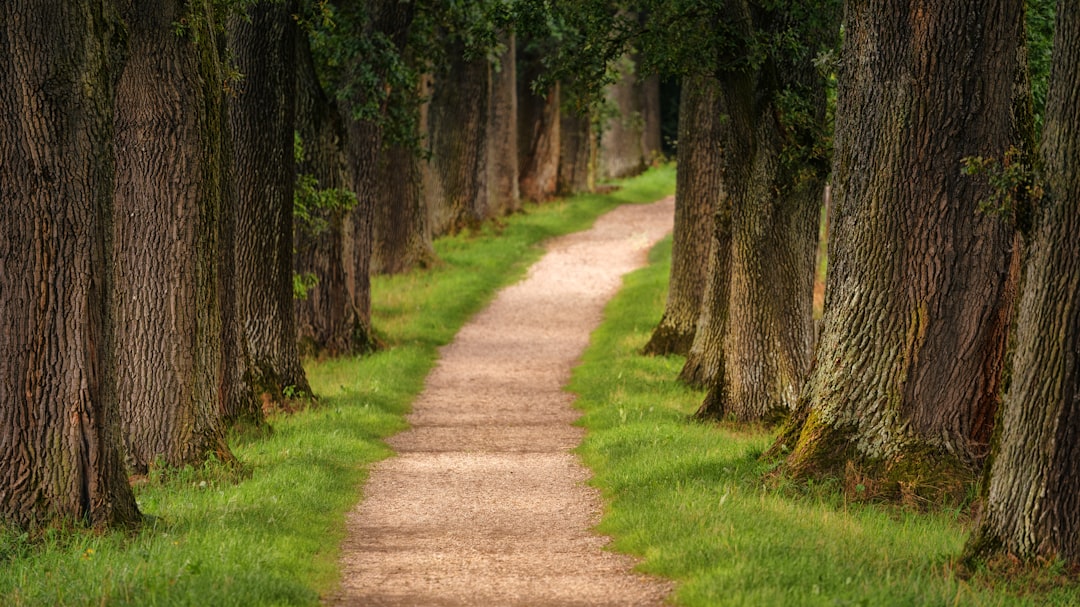Mulching with Grass Clippings: A Sustainable Option?

Mulching is the process of covering the soil around plants with a layer of material, such as leaves, straw, or grass clippings. This layer of mulch provides numerous benefits to the garden, including conserving water, reducing weed growth, and improving soil structure. One readily available and often overlooked material for mulching is grass clippings. In this article, we will explore the benefits of using grass clippings for mulching and provide tips on how to properly collect and apply them.
Key Takeaways
- Mulching with grass clippings is an easy and sustainable way to improve your garden.
- Using grass clippings as mulch can help conserve water and reduce soil erosion.
- To properly collect grass clippings for mulching, use a bagging mower or rake them up after mowing.
- Before applying grass clippings as mulch, make sure to prepare your garden by removing weeds and debris.
- When applying grass clippings as mulch, spread them evenly and avoid piling them too high around plants.
Benefits of Using Grass Clippings for Mulching
Grass clippings are an excellent choice for mulching due to their nutrient-rich composition. When grass is mowed, the clippings contain nitrogen, phosphorus, and potassium, which are essential nutrients for plant growth. By using grass clippings as mulch, you are returning these nutrients back to the soil, providing a natural fertilizer for your plants.
Another major benefit of using grass clippings for mulching is that they are free and readily available. Instead of bagging up your grass clippings and sending them to the landfill, you can repurpose them in your garden. This not only saves you money but also reduces waste and promotes sustainability.
In addition to being nutrient-rich and easily accessible, grass clippings also help retain moisture in the soil. When applied as mulch, they create a barrier that prevents evaporation and keeps the soil moist for longer periods. This is especially beneficial during hot summer months when water conservation is crucial.
Furthermore, grass clippings act as a natural weed suppressant. When applied as mulch, they create a dense layer that blocks sunlight from reaching weed seeds, preventing them from germinating and growing. This reduces the need for manual weeding or the use of chemical herbicides.
Lastly, using grass clippings as mulch improves soil structure. As the clippings break down, they add organic matter to the soil, which improves its texture and fertility. This is particularly beneficial for clay or sandy soils that lack organic content.
How to Properly Collect Grass Clippings for Mulching
To collect grass clippings for mulching, it is important to do so at the right time and with the proper tools. The best time to collect grass clippings is when you are mowing your lawn. It is recommended to mow your lawn when the grass is dry, as wet grass clippings can clump together and become difficult to spread evenly as mulch.
When collecting grass clippings, you will need a bagging attachment for your lawnmower or a grass catcher. These tools allow you to collect the clippings as you mow, making the process more efficient. If you do not have a bagging attachment or grass catcher, you can also rake up the clippings after mowing.
When collecting grass clippings, it is important to avoid using clippings that have been treated with herbicides or pesticides. These chemicals can be harmful to your plants and the environment. If you are unsure whether your lawn has been treated, it is best to err on the side of caution and avoid using those clippings for mulching.
Preparing Your Garden for Mulching with Grass Clippings
| Task | Time Required | Tools Needed |
|---|---|---|
| Clearing the Garden | 1-2 hours | Gloves, rake, shovel, wheelbarrow |
| Mowing the Lawn | 30 minutes – 1 hour | Lawnmower, bag or mulching attachment |
| Applying the Grass Clippings | 30 minutes – 1 hour | Gloves, rake, shovel |
| Watering the Garden | 10-15 minutes | Watering can or hose |
Before applying grass clippings as mulch, it is important to prepare the area where you will be mulching. Start by clearing any existing weeds or debris from the area. This will ensure that the mulch is applied directly to the soil and not on top of weeds.
Next, prepare the soil by loosening it with a garden fork or tiller. This will help improve water penetration and root growth. If your soil is compacted or lacking in organic matter, consider adding compost to enrich the soil. This will provide additional nutrients for your plants and improve overall soil health.
Applying Grass Clippings as Mulch: Techniques and Tips
When applying grass clippings as mulch, it is important to apply the right amount and at the right frequency. As a general rule, apply a layer of grass clippings that is about 2-3 inches thick. This will provide adequate coverage without smothering your plants.
It is also important to replenish the mulch layer as it decomposes. Grass clippings break down relatively quickly, so you may need to add more every few weeks to maintain the desired thickness. This will ensure that your plants continue to receive the benefits of mulching throughout the growing season.
To apply grass clippings as mulch, simply spread them evenly around your plants, making sure to avoid piling them up against the stems or trunks. This can create a moist environment that promotes rot and disease. Instead, leave a small gap around the base of each plant to allow for air circulation.
When applying grass clippings as mulch, it is important to avoid using clippings that are too long or clumped together. Long clippings can mat together and create a barrier that prevents water from reaching the soil. To prevent this, mow your lawn frequently and use a mulching mower that cuts the clippings into smaller pieces.
How Mulching with Grass Clippings Helps Conserve Water

One of the key benefits of mulching with grass clippings is its ability to conserve water. When applied as mulch, grass clippings create a protective layer that reduces evaporation and helps retain moisture in the soil. This is especially beneficial during hot summer months when water conservation is crucial.
By reducing evaporation, mulching with grass clippings can significantly reduce the amount of water needed for irrigation. This not only saves you time and money but also promotes sustainable gardening practices. Additionally, by keeping the soil consistently moist, mulching with grass clippings helps prevent drought stress in plants, leading to healthier and more productive gardens.
The Role of Grass Clippings in Reducing Soil Erosion
Another important benefit of mulching with grass clippings is its ability to reduce soil erosion. When heavy rain or strong winds occur, bare soil is susceptible to erosion, which can lead to nutrient loss and decreased soil fertility. By applying a layer of grass clippings as mulch, you create a protective barrier that prevents soil particles from being washed or blown away.
Furthermore, grass clippings help improve soil structure, which also contributes to reducing soil erosion. As the clippings break down, they add organic matter to the soil, improving its ability to hold water and resist erosion. This is particularly beneficial for sloped areas or gardens that are prone to erosion.
Using Grass Clippings as a Natural Fertilizer for Your Garden
Grass clippings are not only beneficial as mulch but also as a natural fertilizer for your garden. As mentioned earlier, grass clippings contain nitrogen, phosphorus, and potassium, which are essential nutrients for plant growth. By using grass clippings as mulch, you are returning these nutrients back to the soil.
To maximize the nutrient content of grass clippings, it is important to mow your lawn frequently and leave the clippings on the lawn. This allows the clippings to decompose and release their nutrients slowly over time. If you prefer to collect the clippings for mulching, consider adding them to a compost pile first. This will allow them to decompose fully before being applied as mulch.
When using grass clippings as a natural fertilizer, it is important to avoid applying them in excessive amounts. Too much grass clippings can create a thick layer that prevents air circulation and promotes rot. As a general rule, apply a thin layer of grass clippings and replenish as needed.
Addressing Common Concerns About Using Grass Clippings for Mulching
While mulching with grass clippings offers numerous benefits, there are some common concerns that gardeners may have. One concern is that grass clippings can promote weed growth. While it is true that grass clippings can contain weed seeds, applying them as mulch actually helps suppress weed growth. The dense layer of grass clippings blocks sunlight from reaching weed seeds, preventing them from germinating and growing.
Another concern is that grass clippings can attract pests, such as slugs or snails. While it is possible for pests to be attracted to grass clippings, this can be mitigated by properly applying the mulch. Avoid piling the clippings up against the stems or trunks of plants, as this creates a moist environment that pests are attracted to. Instead, leave a small gap around the base of each plant to allow for air circulation.
It is also important to address concerns about using grass clippings that have been treated with herbicides or pesticides. As mentioned earlier, it is best to avoid using clippings that have been treated, as these chemicals can be harmful to your plants and the environment. If you are unsure whether your lawn has been treated, it is best to err on the side of caution and avoid using those clippings for mulching.
Mulching with Grass Clippings for a Sustainable Garden
In conclusion, mulching with grass clippings offers numerous benefits for your garden. Grass clippings are nutrient-rich, free and readily available, help retain moisture in the soil, reduce weed growth, and improve soil structure. By properly collecting and applying grass clippings as mulch, you can conserve water, reduce soil erosion, and provide a natural fertilizer for your plants.
So, the next time you mow your lawn, consider repurposing those grass clippings in your garden. Not only will you be saving money and reducing waste, but you will also be promoting sustainable gardening practices. Mulching with grass clippings is a simple and effective way to improve the health and productivity of your garden while minimizing your environmental impact.
If you’re wondering whether you can use grass clippings as mulch, you’ll find a comprehensive answer in this informative article from Lawn World. The article explores the benefits and considerations of using grass clippings as mulch in your garden. It provides practical tips on how to properly apply and manage grass clippings as mulch, ensuring optimal results for your plants. To learn more about this topic, check out the article on Lawn World’s website: Can I Use Grass Clippings as Mulch?
FAQs
What are grass clippings?
Grass clippings are the small pieces of grass that are cut off from the lawn during mowing.
Can grass clippings be used as mulch?
Yes, grass clippings can be used as mulch in gardens and flower beds.
What are the benefits of using grass clippings as mulch?
Using grass clippings as mulch can help retain moisture in the soil, suppress weed growth, and add nutrients to the soil as the clippings decompose.
How should grass clippings be used as mulch?
Grass clippings should be spread in a thin layer over the soil, avoiding clumps that can mat down and prevent water from reaching the soil.
Are there any precautions to take when using grass clippings as mulch?
Grass clippings should not be used if the lawn has been treated with herbicides or pesticides, as these chemicals can harm plants. Additionally, grass clippings should be allowed to dry out before being used as mulch to prevent them from becoming slimy and smelly.



